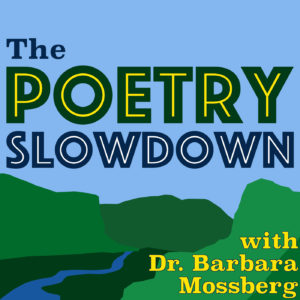 In fact it leads to heartwarming knowledge about our own humanity! And we need to hear this! Now! So we’ll slow down to take that windy path where goats go, lambs gambol. I’m your host Barbara Mossberg, with this ministry of sorts, to bring the words we use and think in and express love in and order coffee with, to appreciation of who we are, and what we’re doing on this life journey together on earth. We’re produced by Zappa Johns, who is on the Central Coast, and you, dear listener, are on a lake, on a ranch, in a loft, and we’re connected in this very moment by sound waves as in days of old, when we sat around campfires and told each other our stories.
In fact it leads to heartwarming knowledge about our own humanity! And we need to hear this! Now! So we’ll slow down to take that windy path where goats go, lambs gambol. I’m your host Barbara Mossberg, with this ministry of sorts, to bring the words we use and think in and express love in and order coffee with, to appreciation of who we are, and what we’re doing on this life journey together on earth. We’re produced by Zappa Johns, who is on the Central Coast, and you, dear listener, are on a lake, on a ranch, in a loft, and we’re connected in this very moment by sound waves as in days of old, when we sat around campfires and told each other our stories.
Sheep, Goats, and Fellow Mortals
In our show today, as we slow down and savor texts that mean something encouraging in our lives, fire our conscience, light our consciousness about the gift of consciousness on this earth, we consider our age-old human love for sheep and goats—eating, yes, our Homer readers will remind us, but also as pets, and as fellow journey companions (think of the role of the shepherd in our human experience). In this lens, we will hear some of our greatest writers hold forth with compassion, with empathy, for what Robert Burns calls “our fellow mortals.†We’ll hear excerpts from John Muir’s “Stickeen,†one of the best dog (and glacier) stories ever written, and poetry of Mary Oliver, D.H. Lawrence, Lawrence Ferlinghetti, Eugenio Del Andrade, Naomi Shihab Nye, Aaron Fogel, Robert Service, e.e. cummings, Jane Yolen, some folklore history, and two books out there that are companions to the great Gerald Durrell of My Family and Other Animalsfame, Carole George, The Lambs: My Father, a Farm, and the Gift of a Flock of Sheep, and Goat Songby Brad Kessler, books that started me on this goat path, and we end with Billy Collins, who reflects on the printing history alleging that one Gutenberg Bible requires 300 sheep skins. Yes, sheep skin—what we write on. It’s very complicated, this relationship we have with our fellow mortals (if we dare call them that after eating them and making them paper).
We begin with Barry Lopez’s “Everything is held together with stories. That is all that is holding us together, stories and compassion,” and reflect on Emily Dickinson (of course) and her poem on the Clown beholding this earth as “tremendous†and “a whole Experiment of Green†even though he doesn’t own it. Let’s slow down now to follow this goat trail and consider how efforts as human beings to be compassionate and extend our imaginations to the idea that denizens on earth are fellow mortals. Happy morning to you—Yours truly, Barbara Mossberg
© Barbara Mossberg 2018

